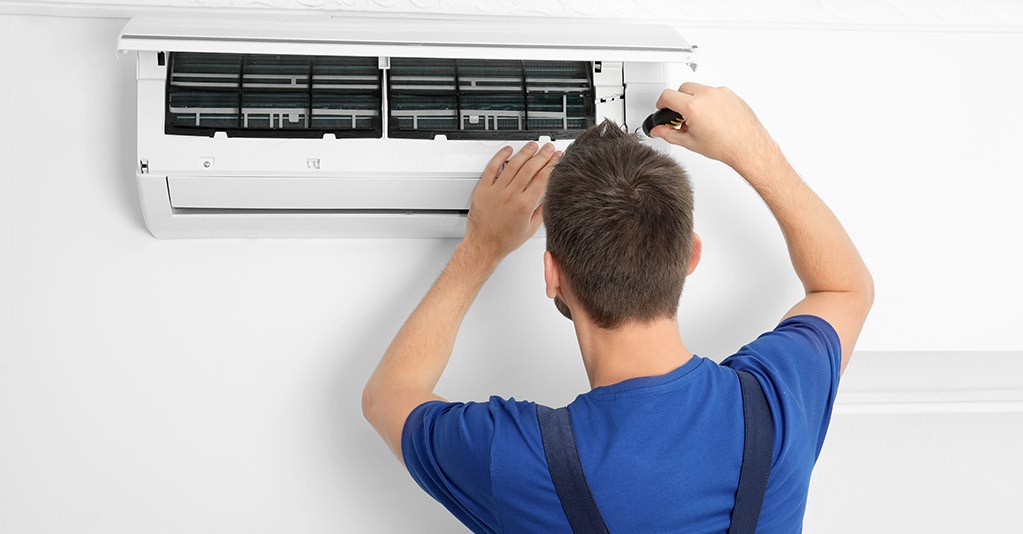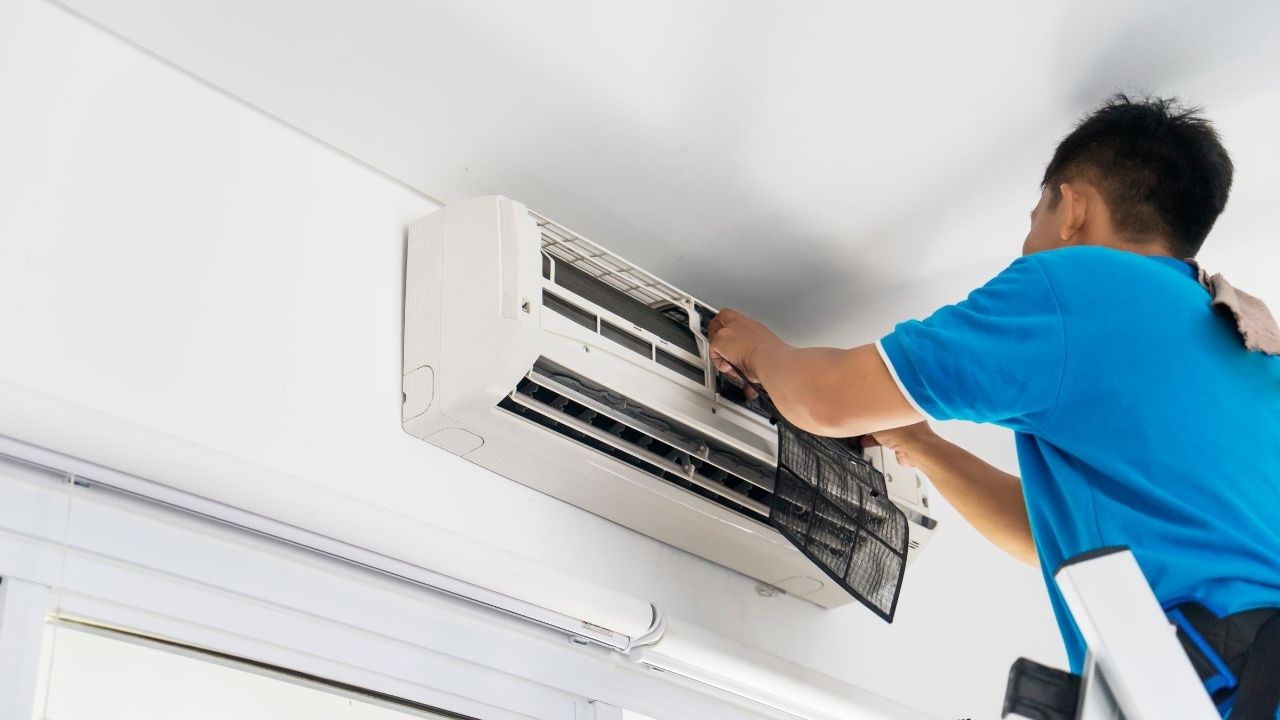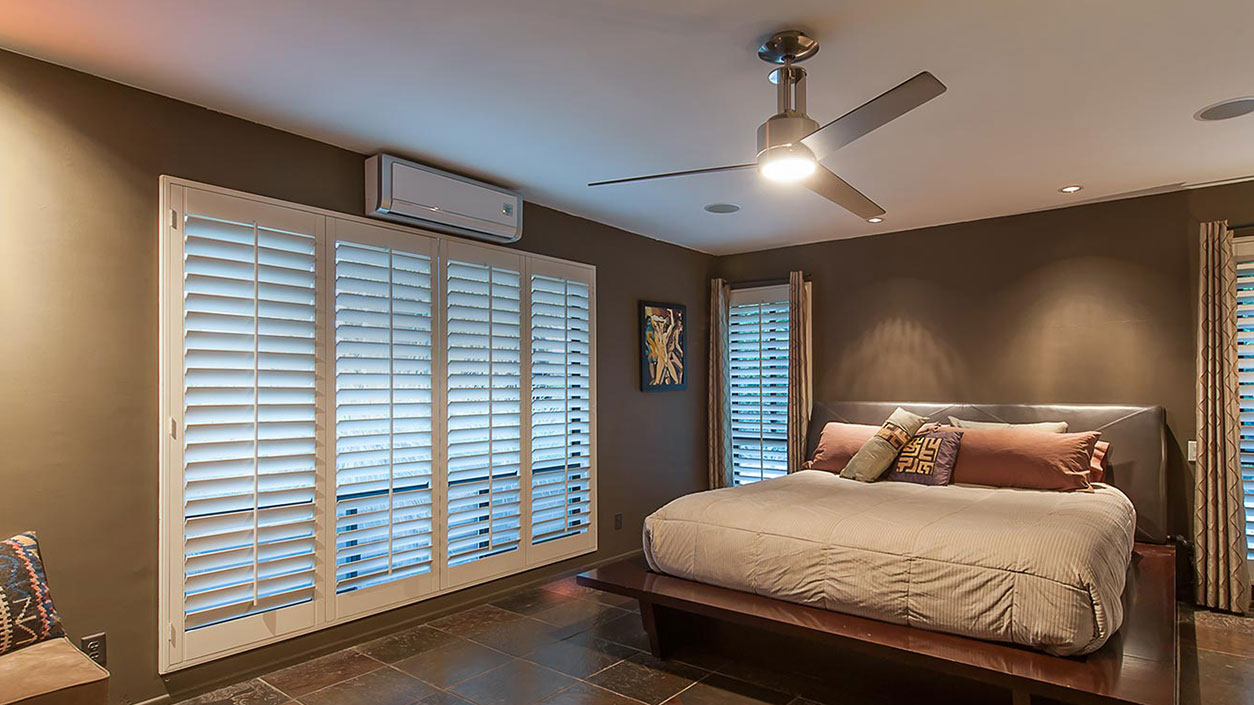When it concerns making architectural rooms, the old saying 'form follows function' applies. However have you ever before took into consideration how incorporating a/c into design can raise comfort and effectiveness simultaneously?
The smooth combination of cooling systems within the structure of a structure not just affects the residents' well-being but additionally influences the overall sustainability of the structure. As you check out the intricate connection in between style and a/c, a globe of cutting-edge services and sophisticated technologies awaits your discovery.
Secret Takeaways
- Energy-efficient systems improve convenience and sustainability.
- Integrated air conditioning boosts interior air quality.

- Stabilizing appearances and functionality guarantees ideal style.
- Future fads focus on wise, lasting cooling services.
Relevance of Integrated Cooling
When making areas, integrating a/c is essential for ensuring the most effective convenience and performance. Power efficiency plays a vital duty in the design procedure, as it not just lowers operational prices but additionally reduces the ecological impact of the structure. By incorporating energy-efficient air conditioning systems, you can develop a sustainable and economical service that benefits both the passengers and the planet.
On top of that, indoor air top quality is an additional essential variable to take into consideration when developing with incorporated cooling. Appropriate air flow and filtration systems aid keep a healthy and balanced indoor environment by minimizing toxins and allergens. This causes enhanced passenger health and performance. When selecting air conditioning systems, prioritize those that supply innovative filtration innovations to boost the overall interior air high quality.
Variables Affecting Style Decisions
Integrating a/c into architectural styles requires mindful consideration of various variables that affect design choices. air condition repair When including air conditioning systems, sustainability factors to consider are vital to minimize the building's environmental impact. Individual experience plays a significant function in establishing the efficiency and contentment with the cooling system.
- Energy Effectiveness: Lasting layout practices intend to reduce energy consumption, which not only benefits the atmosphere yet also lowers functional expenses for the building proprietor.
- Indoor Air Quality: Offering a comfy and healthy indoor atmosphere improves the total individual experience, promoting productivity and well-being.
- Visual appeals and Combination: Integrating cooling systems perfectly into the building style guarantees that performance does not compromise the visual charm of the area, boosting user contentment and overall structure looks.
Efficient Cooling Down Approaches for Structures
To enhance cooling down efficiency in buildings, think about including passive style approaches together with air conditioning systems. Passive cooling methods can significantly reduce the need for mechanical cooling, bring about more sustainable options for keeping comfortable indoor temperatures. Design attributes such as shading devices, all-natural air flow systems, and thermal mass can aid regulate temperature levels without relying only on energy-intensive air conditioning. By tactically placing windows to make best use of cross air flow or using reflective roof materials to lower solar warm gain, you can harness the power of nature to cool your building efficiently.
Along with easy methods, carrying out lasting options like environment-friendly roofing systems or living walls can further enhance cooling efficiency by giving insulation and decreasing warm absorption. These attributes not only aid in keeping comfortable interior temperature levels but also contribute to a greener atmosphere. By combining passive cooling techniques with sustainable remedies, you can create a more energy-efficient and eco-friendly structure design that prioritizes both comfort and preservation.
Balancing Visual Appeals and Capability
Consider the harmonious assimilation of visual components with useful aspects in your architectural layout to guarantee a well balanced and impactful result. When including cooling systems into your building layout, striking a balance between visual appeals and functionality is essential to developing areas that not only look great however also supply excellent comfort for occupants.
To attain this equilibrium, maintain the adhering to factors in mind:
- Blend the System with the Surroundings: Make sure that the a/c units or vents seamlessly incorporate with the overall aesthetic of the area, whether through concealed positioning, decorative covers, or matching colors.

- Prioritize Individual Experience: Style the air movement and temperature control systems in such a way that prioritizes the convenience and health of the owners. Take into consideration aspects such as air circulation, sound levels, and ease of use to improve the general customer experience.
- Integrate Sustainable Practices: Go with energy-efficient cooling solutions that not just add to the aesthetic appeal of the building however also promote sustainability and decrease environmental influence.
Future Fads in Architectural Air Conditioning
As you envision the future of building layout, remaining abreast of emerging cooling trends becomes essential for enhancing both form and feature within your projects.
The assimilation of smart modern technologies right into architectural air conditioning systems is readied to reinvent the method structures are cooled down. These systems make use of information and automation to optimize energy use, supplying tailored convenience while reducing ecological impact.

Lasting remedies are also forming the future of building cooling. From easy design methods that make the most of all-natural air flow to cutting-edge air conditioning materials that decrease the need for traditional cooling, sustainability is at the forefront of cooling innovations. Architects are increasingly including green roofs, shading components, and thermal mass right into their layouts to develop even more energy-efficient cooling systems.

Often Asked Concerns
Just How Does Air Conditioning Impact the Overall Sustainability and Energy Efficiency of a Structure Style?
When you integrate cooling right into building design, it affects sustainability and power efficiency. Energy consumption can climb due to air conditioning usage, influencing structure efficiency. This enhanced energy need can have negative environmental impacts, decreasing overall sustainability.
To minimize these results, take into consideration incorporating energy-efficient a/c systems, proper insulation, and passive air conditioning strategies. Stabilizing comfort with energy efficiency is important for creating sustainable architectural layouts.
Exist Any Type Of Laws or Certifications That Architects Required to Consider When Integrating Air Conditioning Into Their Designs?
When incorporating air conditioning right into your styles, it's crucial to take into account regulatory requirements like building regulations and qualification standards for power effectiveness. Fulfilling these standards assurances that your project aligns with market finest techniques and environmental goals.
Acquainting yourself with these guidelines will certainly help you in developing sustainable styles that prioritize comfort while likewise reducing power consumption. Stay educated and compliant to provide projects that are both comfy and environmentally friendly.
Can the Positioning of Cooling Units Affect the General Convenience and Functionality of a Space?
When it concerns cooling units, placement matters a great deal for your space's convenience and capability. Air circulation is essential, so avoid blocking vents or positioning units in tight corners.
Take into consideration how environmental pollution can affect your environment and aim for a cosmetically pleasing arrangement that blends effortlessly with your spatial design.
Take notice of where you place these devices to guarantee optimum convenience and effectiveness throughout your area.
What Are Some Cutting-edge Technologies or Products That Can Be Made Use Of to Boost Air Conditioning Systems in Modern Architecture?
To enhance air conditioning systems in modern-day style, you can check out wise controls and lasting materials. Easy air conditioning strategies and using thermal mass are innovative ways to boost efficiency and convenience.
How Can Architects Ensure That the Design of A/c Solutions Enhances the General Aesthetic of a Building While Still Prioritizing Capability and Comfort?
To ensure the style of a/c systems matches a structure's visual, focus on aesthetic combination and layout consistency. Include energy-efficient modern technologies for functionality. Balancing aesthetics and functionality enhances resident comfort.
Highlight seamless assimilation of cooling aspects right into the architectural design. By concentrating on both looks and energy effectiveness, engineers can create an area that's aesthetically enticing, comfortable, and eco-friendly.
Conclusion
In general, when making with convenience in mind, integrating air conditioning in architecture is crucial. By taking into consideration elements such as reliable air conditioning techniques, stabilizing visual appeals and capability, and staying ahead of future fads, designers can produce areas that aren't only visually appealing but additionally comfy for owners.
It is essential to prioritize the well-being and convenience of those who'll be making use of the room, and incorporated air conditioning plays an essential duty in accomplishing this objective.
